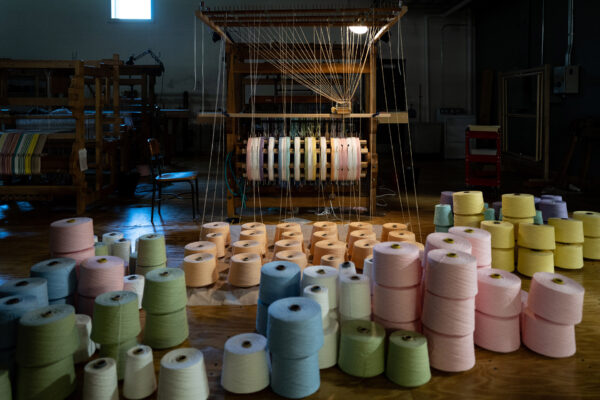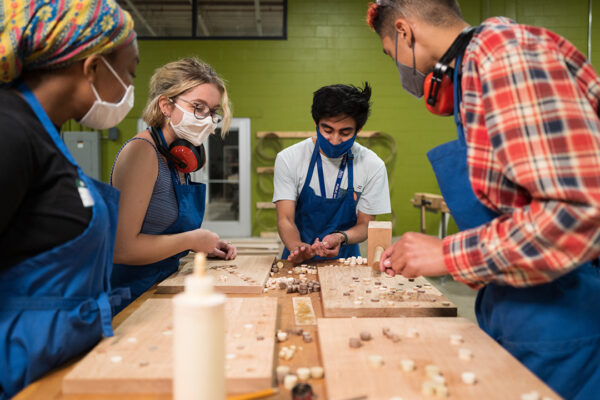The Crafting Diversity Initiative
We invite you to read the following Q&A with American Craft magazine and Aaron Beale, Director of Student Craft. Aaron provides an in-depth overview of Student Craft’s Crafting Diversity initiative and what it means for Berea College as an institution. An excerpt of this Q&A appeared in the Summer 2022 edition of American Craft magazine, with the theme Visionaries in Craft.
The “Rainbow” baby blanket. This product, the very first design completed after the adoption of our Crafting Diversity focus, by Head of Weaving Erin Miller and students Wes Hansen ’21 and now Weaving Assistant Emerson Croft ’21, sought to offer a blanket option beyond a gender binary and one reflective of Berea College’s Sixth Great Commitment to gender equality.
Students Makaya ’22, Isaiah ’23, Oscar ’25, and Catelyn ’25 work together on this year’s “Intersections” Cutting Boards. “Intersections” was designed by student Sharon ’21 and uses inlaid circles of wood from different species and different sizes to explore visual representations of diversity and intersectional feminism through our work in the woodshop.
The other hurdle I hadn’t anticipated and have only just recently come to understand is that many of our students didn’t trust that we really wanted their voices—and not just their labors—to be included in the work of the program. As a person who has always been privileged because of my race, gender, and economic status, I very naively thought we could just invite our students to step forward creatively and expect that they would jump at the chance to contribute. Berea always seeks to bring its students from, in the words of the late bell hooks, from margin to center. I’ve learned that empowering such a journey is not always so easy. We have had to earn students’ trust, and we will continue to work toward sustaining it.
- Emerson Croft, Weaving Assistant
- Steve Davis-Rosenbaum, Head of Craft Education and Outreach
- Hunter Elliott, Head of Apprenticeships
- Erin Miller, Head of Weaving
- Jedidiah Radosevich, Woodcraft Assistant
- Chris Robbins, Head of Broomcraft
- Rob Spiece, Head of Woodcraft
- Philip Wiggs, Head of Ceramics

Berea College Student Craft Staff. Left to Right, Steve Davis-Rosenbaum, Jedidiah Radosevich, Chris Robbins, Philip Wiggs, Aaron Beale, Emerson Croft, Erin Miller, Rob Spiece, Hunter Elliott





